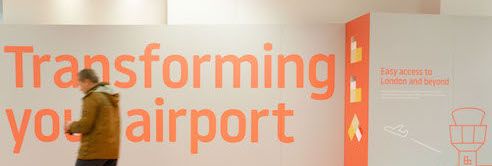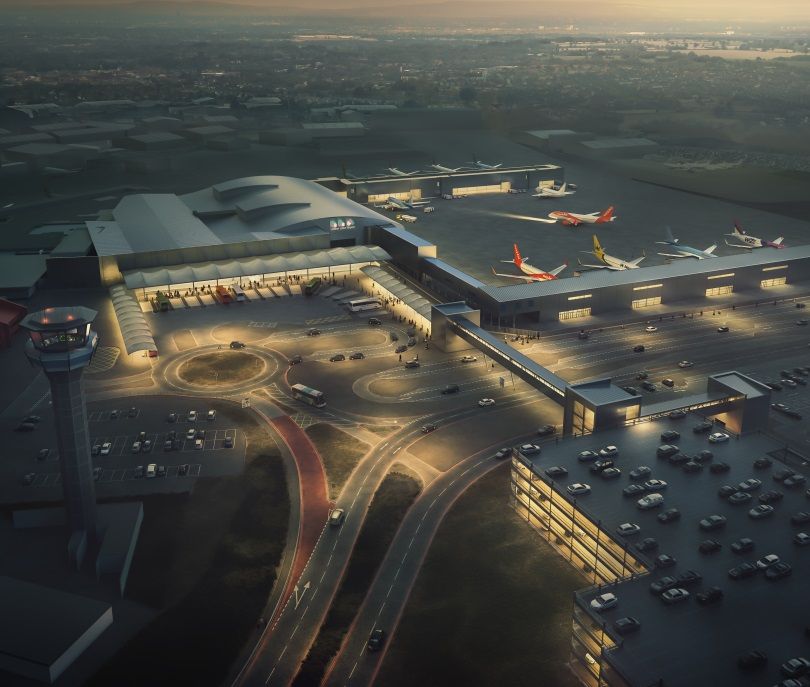
London Luton Airport was officially opened on 16 July 1938 by the Right Honourable Kingsley Wood, Secretary of State for Air. The airport was owned by the Borough of Luton and was thought of as the northern terminal for London.
During the war, the airport was a base for 264 Fighter Squadron as well as a manufacturing site where both civil and military aircraft were designed and built. In 1952, civil use of the airport resumed and a new control tower was opened.

During the next ten years, the 'package' holiday was developed and became very popular, allowing many people to travel abroad for the first time. Luton airport played an important role in the development of the package holiday business in the UK. The formation of Euravia in 1962, now Britannia Airways, one of the world's largest charter airlines was key to this development.
By 1969, a fifth of all holiday flights from the UK departed from Luton Airport and by 1972 Luton had become Britain's most profitable airport. However, when in 1974 the major tour operator Clarksons and its airline Court Line went into liquidation, Luton was hit hard.
The airport was still recognised as an integral part of the London airports system though, and in 1978 the committee began preparations to take Luton into the future and raise passenger levels to 5 million a year. In 1985 a new international terminal building was opened by HRH The Prince of Wales.
1986 saw Monarch Crown Service launch scheduled flights to Spain and Irish airline Ryanair launch scheduled services from Luton to Ireland. This marked the growth of scheduled air services from Luton which represent over 70 per cent of their business.
In 1987 Luton International Airport became a Limited Company with Luton Borough Council as the sole shareholder. The airport was renamed London Luton Airport in 1990 to mark its position as part of the London airport network, but a decline in passenger numbers struck again in 1991 as Ryanair moved a large part of its business to Stansted airport.
In 1991 an unsuccessful attempt was made to sell the airport and a new management team was appointed to stop the losses and try and improve passenger numbers. The new management team was to run the airport on a commercial basis and produce benefits to the Borough by developing new business and employment. Over the next 5 years 30 million was invested in the airport infrastructure and facilities were significantly improved.
These upgraded facilities included a new air traffic control tower, new cargo centre, the extension and refurbishment of the passenger terminal, new access road, extension of the car parking adjacent to the passenger terminal and the installation of Category 3 Instrument Landing System.

Business increased during this period with the introduction of Airtours flights and the low cost scheduled airlines Easyjet and Debonair. Passenger levels increased rapidly with 3.4 million in 1997/8 and rising again to 4.4 million by 1998/9 making London Luton the UK's fastest-growing major airport.
In order to expand further, London Luton Airport signed a unique private-public partnership in 1998 to secure financial investment for the future. This meant the airport remained publicly owned by Luton Borough Council but was to be managed and developed by a new private consortium.
An 80 million development programme was completed in Autumn 1999 giving the airport a 40 million terminal with 60 check-in desks, modern baggage and flight information systems and a wide range of shops, restaurants and bars which was officially opened in November 1999 by HM The Queen and HRH The Duke of Edinburgh.
As well as the new terminal, the airport's parallel taxiway was extended; new widened aircraft stands were constructed; the taxiway linking the runway and east apron was improved and car park facilities were upgraded. At the end of 1999, Railtrack opened the 23 million London Luton Parkway station making the journey to central London less than 30 minutes.
The terminal was refurbished further in 2000 with improvements to the departures and arrivals area, baggage reclaim facilities and new retail and catering outlets.
The airport continued to steadily grow and in 2014 the airport reported record numbers of passengers, with over 10 million people flying from the terminal. In the same year, a major redevelopment plan was launched to redesign the terminal and ensure a smooth and easy experience for visitors to the airport. The revamp seems to have worked as by 2017, passenger numbers had increased to a record-breaking 15.7 million.